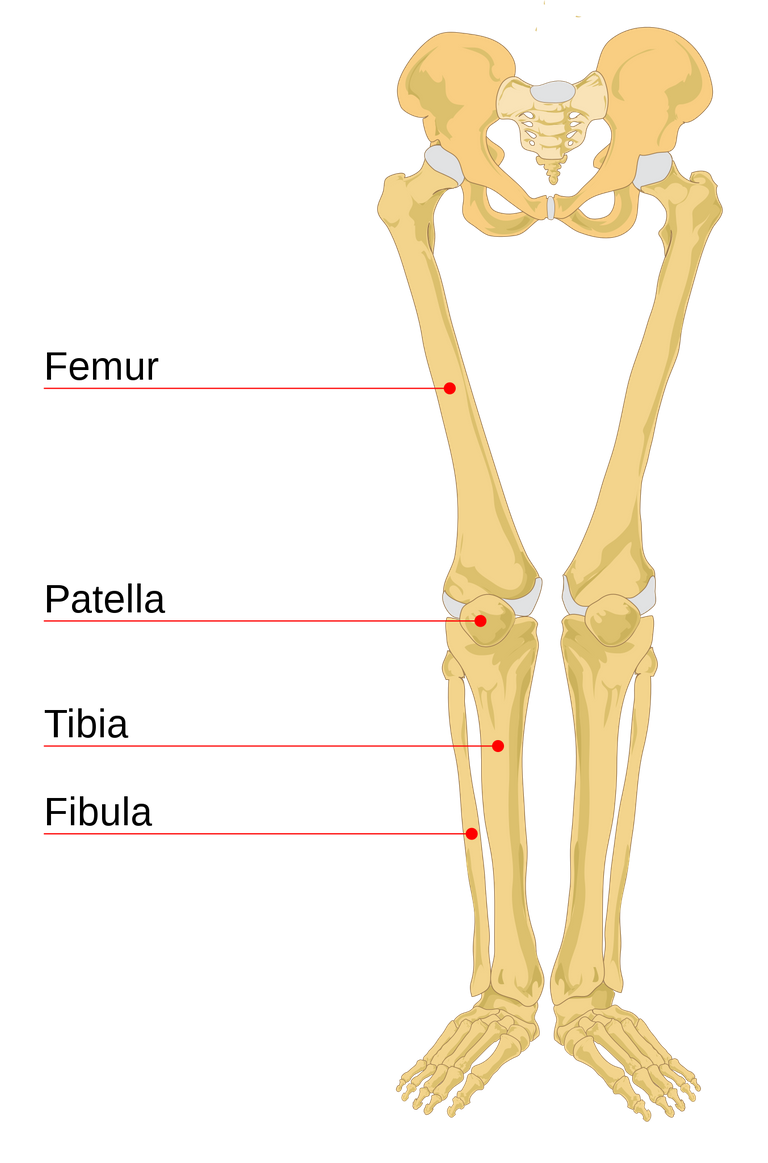
"She’s got legs, she knows how to use ’em!" Or so the song goes. Today I am going to talk about a less controversial part of the human body: the legs. I say “less controversial” because unlike feet, legs do not usually illicit such negative responses when bared. But even so, there are cultures in which bared legs are “immodest”. But for most of my audience I’m sure this isn’t the case.
I have never given much thought to legs and their inner workings. As an artist I have considered proportions and shapes, and major muscles as they relate to appearance, but I have never really studied how complicated the human leg is.
The first surprising information for me while researching this topic is the technical definition of “leg” in human anatomy. In general use we refer to the entire lower limb from the hip to the ankle as the “leg”. In technical language only the section from the knee to the ankle is “leg”. The upper part is referred to as the “thigh”. For this article I will be using the general use of “leg” including the thigh.
There are four major bones in the human leg
: the femur, the tibia, the fibula, and the patella. The femur is the longest bone, the lower leg consists of the tibia and the fibula, and the knee contains the patella.

Source: Public domain
The second surprise for me is the number of muscles in the leg. There are 17 major muscles in the hip alone.
There are 5 groups of muscles
found in the thigh.


Source: Grey’s Anatomy, Public domain
In the lower leg there are three groups of muscles .

Source:Grey’s Anatomy, Public domain
In all of those muscle groups there are numerous muscles with every feature necessary for our upright mobility. Humans aren’t the only bipedal primate, but we are the only ones who primarily walk bipedally.
With all the muscles in the legs, it’s no surprise that there are many arteries The legs are supplied blood by two main arteries, which then divide into multiple smaller arteries which then divide even smaller arteries and capillaries extending all the way into each of the toes. To return all that blood to the heart there are nearly as many veins running similar reversed courses to the arteries.
The leg is also home to various nerves and sensory structures.
The external leg is covered by part of the largest organ in the body, the skin. This is the part we are most familiar with, obviously. We are mammals, so naturally we are covered in hair, and legs are no exception to this rule. In many cultures it is customary to shave legs, as it projects a youthful and “beautiful” image. This is of course more common in females, though not exclusive. Males generally shave their legs for athletic purposes, most often in swimming, where smooth hairless skin reduces drag.
Other than shaving, legs are pretty much left alone cosmetically, though they do provide a large “canvas” for tattoos. For most cultures, bare legs from the upper thigh down are considered acceptable. In some it is custom to cover the entire leg, and in others there are various acceptable ranges for coverage. Like most clothing standards, it’s pretty arbitrary.
Anywho, I hope you learned something from this very brief summary. It is always insane to me how complex the body really is once you dig down into it. We see bodies all the time but we hardly ever stop to consider what we are looking at.
Next time I’ll either focus on the trunk of the body or the arms. Any opinion on which? I’ll save the controversial parts and the head for last.
Yay! 🤗
Your content has been boosted with Ecency Points, by @orthodoxnudism.
Use Ecency daily to boost your growth on platform!
Support Ecency
Vote for new Proposal
Delegate HP and earn more